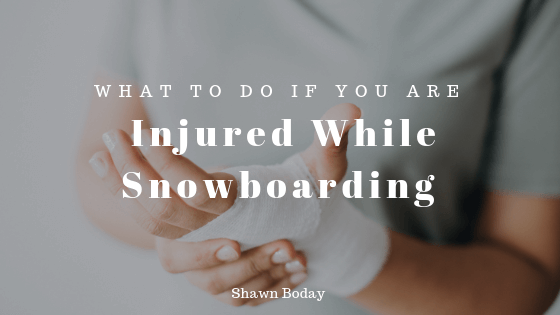Initial Steps
When possible, it’s best to stay with the person who has been injured. The noninjured person should try to flag down any other snowboarders or skiers and see if they can help with the situation. The main task that they can help with is to get word to ski patrol that someone has been injured.
Don’t Move The Injured
Snow is very forgiving. It’s hard to say what type of injuries a person might suffer when they get injured while snowboarding. It’s best if they don’t move at all as moving may cause even more injuries.
It’s also a good idea to have them keep their snowboard on. If they have a leg or ankle that’s broken, trying to remove a large snowboard might just make things worse.
Flagging For Help
The noninjured person should remove their skis or snowboard and use them to flag others and let them know that there’s a problem. If a person has skis, they should stand them upright so that they form an “X.” When a person is using a snowboard, it should be stood up in an upright position as well. It’s best if this is done above the injured person so that anyone coming down the hill will know that there is a problem below.
Ability To Move
If the person is injured in an area where other skiers or snowboarders might not see them and cause a collision, the injured person should see if they are able to move. If they can, it’s best to move out the line of fire and into an area where they are not so vulnerable.
However, the first choice is always to leave them alone if they don’t have to be moved. When possible, it is a good idea to have the injured person sit up against something like a bush or a tree. If they stay in constant contact with snow, they may start to get too cold and form hypothermia.
If the injury occurs near the bottom of the hill and a ski lift is close, the noninjured person should take off their board and run to the station for help.

